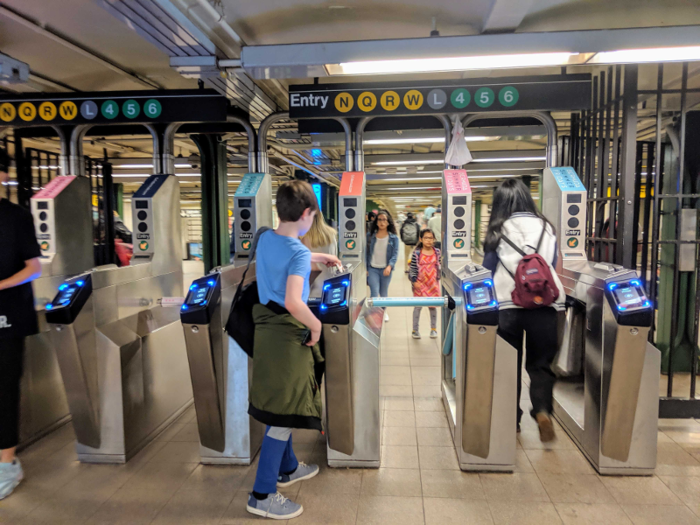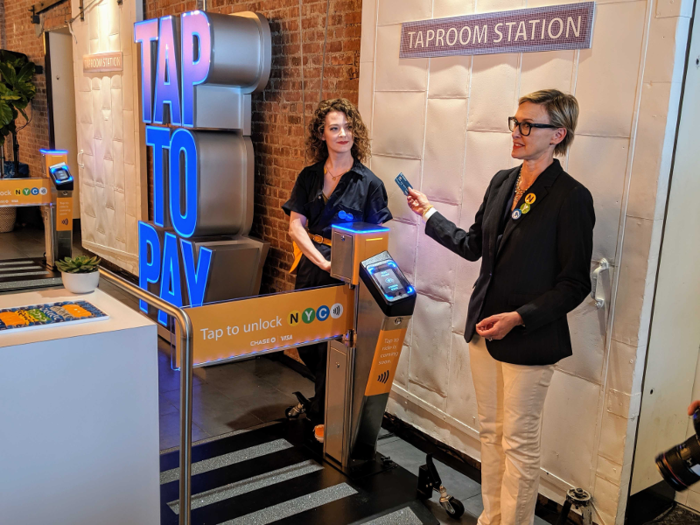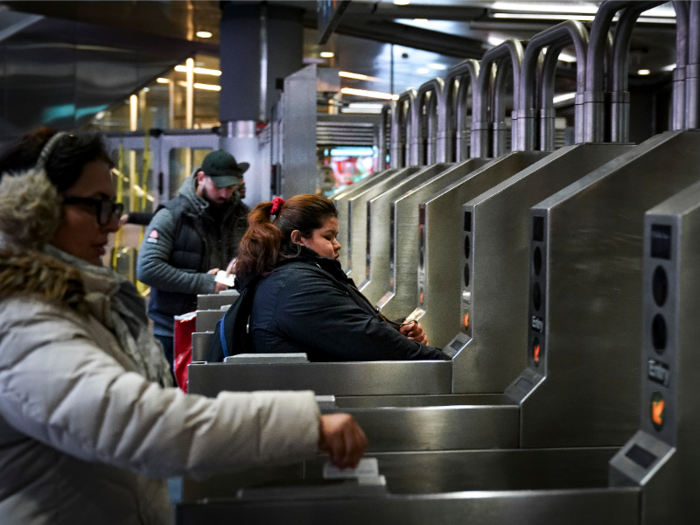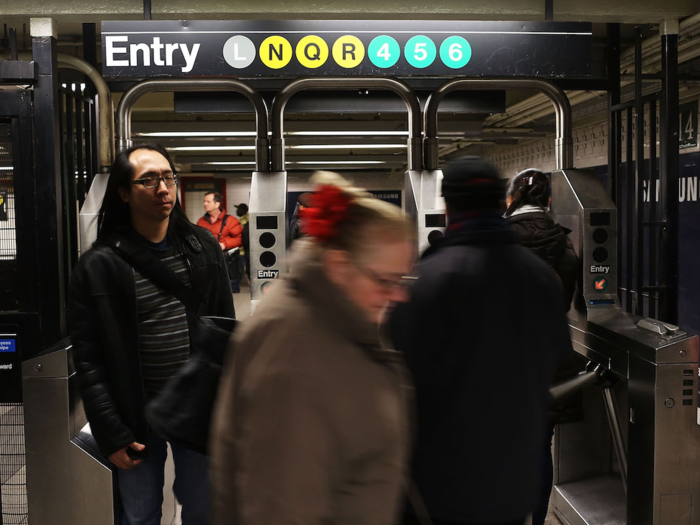Things are starting to change.
Eighty of the US's top 100 merchants have contactless systems in place, Visa estimates, with 11 of the top 25 card issuers now rolling out contactless cards.
That means there's plenty of room for American consumers to catch up with the rest of the world, where 48% of all face-to-face Visa transactions occur via contactless taps, Visa says.
No more headaches on morning commutes.
Two-thirds of the riders surveyed by Visa said they had forgotten funds on a transit card. For example, if you added $20 to a MetroCard, only to swipe for seven rides, and accidentally throw away the extra $0.75.
Now, instead of loading a MetroCard for pay-per-ride fares, New Yorkers can simply tap their contactless credit card to pay their fare and ride the subway. That means no waiting in line for a vending machine, which has a pretty solid chance of being out-of-order or cash-only. (MTA booth employees notably can't accept credit card payments.)
But if you buy unlimited MetroCards, you'll be swiping until at least 2021.
If you're hoping to tap in with a weekly or monthly unlimited pass, you'll still have to wait a little bit, only adding to the headaches with OMNY's initial roll out. More fare options should be in future phases of the rollout.
A full rollout of OMNY is set for 2023.
New York won't officially bid adieu to the MetroCard until 2023. Of course, the agency's track record of completing projects on time isn't great, so it could be even longer.
Other cities will be closely watching New York as it tries to catch up to other global cities and their transit prowess. Just as Visa originally developed its transit technology with the vendor Cubic in London, the system can be easily replicated in other cities throughout the United States and North America.
"New York is just so much bigger when it comes to transit than everybody else," Dan Sanford , Visa's head of consumer products, said in an interview. "They're the closest thing we have in the US to a European city."




